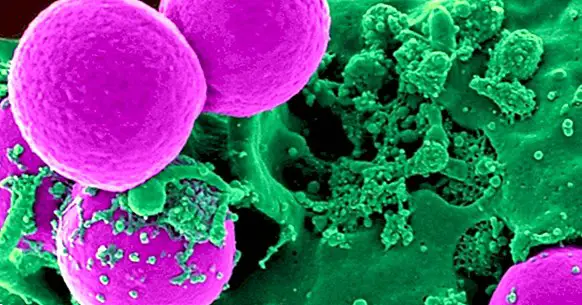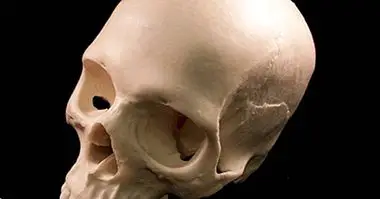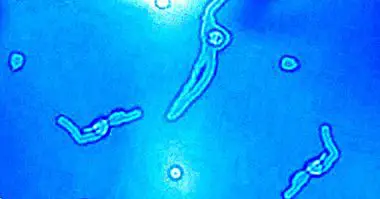The 3 types of bacteria (characteristics and morphology)
Microorganisms that are called bacteria can be found everywhere . The immense variety of species has allowed these forms of life to colonize almost anywhere in the world. Neither need to stress that they have been and continue to be essential elements for today's life; for example, they are in charge of organic decomposition.
In addition, some types of bacteria are of special interest to human beings, either for health issues, to develop industrial processes or for their use as markers of environmental quality. For this reason, we have always seen the need to look for criteria to classify them and offer tools for their identification.
- Maybe you're interested: "Types of major cells of the human body"
What is a bacterium?
The domain of bacteria is composed of an immense group of living beings that are, in general, unicellular (formed by a single cell) and prokaryotes. A prokaryote is a type of cell that does not contain membranous organelles in its interior and its genetic content is freely found in it. These qualities differentiate them from the cells that form, for example, the animals, since these are eukaryotes .
The general structure of bacteria consists of a cell membrane that separates its interior from the outside. In addition to this, they also have a cell wall that surrounds the membrane, providing greater protection and stability to the bacteria. The sum of the two is known as the bacterial cell envelope, and there are differences in both the composition and the form between the different types of bacteria.
- Maybe you're interested: "15 recommended medicine books for the curious"
The main types of bacteria
Having criteria to be able to identify bacteria is a very useful tool for their study, even in some essential cases, as for example in the identification of the cause of the infection in a human disease. Because of this importance, throughout the history of microbiology (science that studies microorganisms, including bacteria) have generated many criteria to achieve a good classification of prokaryotic cells.
There are many ways to classify the types of bacteria, such as according to their source of food, according to their breathing , by the presence or absence of certain enzymatic activity (activity of a specific protein), or by its mobility. Moreover, for a correct identification it is convenient to combine different criteria.
One of the most classic and traditional criteria that exist when it comes to differentiating types of bacteria is to do it from morphological characteristics. Although these are only based on the structure visible through a microscope, they have been very important in the taxonomy of bacteria; Even many species of bacteria get their name from the form they present.
Mainly, these classification considers three fundamental forms:
1. Cocos
This type of bacteria is characterized by having a cellular envelope of spherical shape . That is, when they are observed by the microscope they are circular cells. The subtypes that exist within this category are based on how the cells are grouped.
The solitary spherical bacteria are known as coconut form. However, if instead of one they are two connected round cells, then they are known as diplococci. There are more complex unions that originate a chain (streptococci) or irregular shapes that look like a cluster of grapes (staphylococci).
2. Bacilli
The main characteristic in this type of bacteria is that they have the shape of elongated rods . As happened in the coconuts, the subtypes start from how the cells are grouped.
The solitary form is what is called as a bacillus. If two cells are found together, then it is a diplobacillus. In the most multitudinous joints they can be differentiated according to whether they join at the ends forming a chain (streptobacillus) or on the sides, forming a wall (palisade).
There is a form that is between the first two that has been seen; It is not as spherical as a coconut but it does not become as elongated as a bacillus. This is called cocobacilo.
3. Helicoids
In this last type of bacteria are grouped different shapes that have curvatures in its structure . They can be understood as if they were bacilli that have twisted about themselves, reaching a helix shape.
Mainly they are divided in two, rigid spirals (espirilos) or flexible spirals (spiroqueta). The difference is whether the spirals that draw their cell envelope remain the same or can change over time (the spiral moves).
Curiously, there is another form that belongs to this type: the vibrio . This class of bacteria presents a silhouette similar to a bean seed.In spite of not drawing spirals, it is considered that this type of bacteria is within this group, since the curvature of its cellular envelope is representative of a genus of bacteria ("Vibrio") and they are not temporary, as it can occur in the bacilli or coconuts.



















